How to Price Your Home Strategically in a Balanced Market
If you’re preparing to sell your home in Calgary, pricing it right becomes more essential as our market shifts into balanced conditions, where supply and demand are relatively equal with fewer multiple-offer scenarios than we’ve seen in recent years.
Today’s market demands clarity, precision, and strategy, and that’s where strategic pricing comes in.
Strategic pricing is more than just picking a number you “hope” to get. It’s a deliberate, data-backed approach that factors in buyer behaviour, comparable sales, local trends, and your home’s unique condition.
When done correctly, strategic pricing helps your property stand out, attract the right buyers, and sell at the best possible price — all without sitting on the market longer than necessary.
Let’s take a look.
Understanding List Price and Sale Price
Before we get into how to price your home, it’s essential to understand the difference between two often-confused terms: list price and sale price.
List price is your home’s asking price: what you publicly market it for. It sets the tone for how buyers perceive your property and determines how it appears in online search criteria based on buyers’ search conditions.
Sale price, on the other hand, is the final agreed-upon amount between buyer and seller after negotiations.
In a balanced market, the gap between list and sale price can reveal a lot about your pricing strategy. If you list too high, you may receive little traffic, sit on the market for extended periods, and ultimately settle for a lower sale price after reductions and prolonged negotiations.
If you list too low, hoping to spark a bidding war (two or more offers in the same time period) or receive multiple offers sequentially in a short period, that strategy may no longer pay off. With fewer multiple-offer situations, you risk selling below market value, especially if the right buyers aren’t watching.
Factors that Influence Strategic Pricing
In a balanced market, buyers are doing their homework. They’re comparing sold prices, looking for value, and skipping over listings that feel inflated. A well-priced home signals transparency, realism, and confidence.
Strategic pricing is the process of finding that ideal pricing position—not too high, not too low—for current market conditions to make it approachable for an offer.
Ultimately, the goal of strategic pricing is straightforward: to attract the right buyers early, create momentum, and convert interest into strong offers that result in successful closings. This isn’t guesswork—it’s a formula that weighs some essential factors:
Comparable Sales (Comps) – Start with what has sold, not what’s listed. Look at recent, similar properties that match your home’s size, style, condition, and location whenever possible. The more recent the sale, the better. Remember: buyers are using the same data. If your home is priced significantly above similar properties that just sold, they’ll be advised of that by their Realtor®.
Days on Market (DOM) – Homes that sit on the market too long raise red flags. In a balanced market, buyers assume stale listings are overpriced or flawed in some way. Setting your price too high at the outset often results in fewer showings, followed by price drops, and ultimately, less-than-desirable offers.
Property Condition and Upgrades – Does your home shine, or show its age? Buyers pay more for properties that feel move-in ready. If your home is clean, updated, and staged well, you can push the upper end of your pricing range. If your home needs cosmetic updates or repairs, be realistic: buyers will factor those costs into their offer. Pricing accordingly can help you move the home faster and avoid lengthy negotiations.
Location and Micro-Market Trends – Calgary isn’t a monolithic market. Trends can vary dramatically between apartments and semi-detached or detached homes, as well as between neighbourhoods, depending on factors such as school zones, proximity to transit, upcoming developments, and neighbourhood amenities.
Seller Motivation and Timeline – Your pricing strategy should reflect your goals. If you need to sell quickly due to a relocation, job change, or financial responsibilities, it makes sense to price competitively from the start. If you have flexibility and the home is in top condition, you might explore the upper edge of market value without stretching into wishful thinking.
Strategies for Setting the Right Price
Once you understand the influencing factors, the next step is putting them into practice with proven pricing tactics. Here’s how to price your home smartly and avoid common mistakes:
Work With a Local Real Estate Expert
A seasoned agent understands current buyer behaviour, micro-market trends, and negotiation dynamics. They’ll complete a detailed market evaluation using real sales data — not opinions or outdated comps — and help you interpret the numbers based on your unique situation.
Consider Price Bracketing
Many buyers search using price filters (for example: $700K–$750K). Pricing just below a standard threshold, such as $749,900 instead of $750,000, can place your listing in front of a wider audience and create a psychological impression of better value. At the same time, buyers with a search criteria of $750k+ won’t see your listing. So, the pros and cons of pricing for a particular bracket should always be discussed with your Realtor®.
Incorporate Psychological Pricing
Numbers like $724,900 “feel” more approachable than $700,000 or $725,000. These subtle pricing choices help your listing stand out online and encourage more clicks and showings. However, it's best to use numbers that don’t fall on the bookends of typical search brackets, such as $700k+, and risk being filtered out of a buyer’s search criteria.
Avoid These Common Pricing Pitfalls
- Overpricing: Setting the price too high is one of the most frequent — and costly — mistakes sellers make. It often results in reduced showings, inevitable price reductions, and ultimately, weaker offers. Some sellers believe that pricing high leaves room for negotiation or invites low-ball offers. But in Calgary’s market, where buyers tend to be respectful and less inclined to submit aggressively low offers, an overpriced home may be quietly passed over entirely.
- Underpricing Without Strategy: May result in a fast sale, but leaves money on the table, especially if it doesn’t trigger a bidding war.
- Emotion-Based Pricing: Pricing your home based on what you “need” or what you “put into it” rather than what the market will support is risky. Buyers aren’t paying for your memories—they’re evaluating value.
Final Thoughts: The Right Price Gets You the Best Price
In a balanced market, your pricing strategy sets the tone for everything that follows: marketing, showings, negotiations, and ultimately, your sale price. The most successful sellers don’t chase the market. They lead it with clarity, precision, and insight.
Strategic pricing isn’t about being conservative. It’s about being smart. It positions your home to attract interest, create momentum, and inspire strong offers, all while protecting your bottom line.
Every home and every market is different.
Wondering what your Calgary home is worth? Our team offers a complimentary strategic pricing consultation that includes a detailed market evaluation, local trend insights, and a personalized pricing strategy tailored to your goals.
If you're ready to sell smart in today’s market, our team is ready to help.

